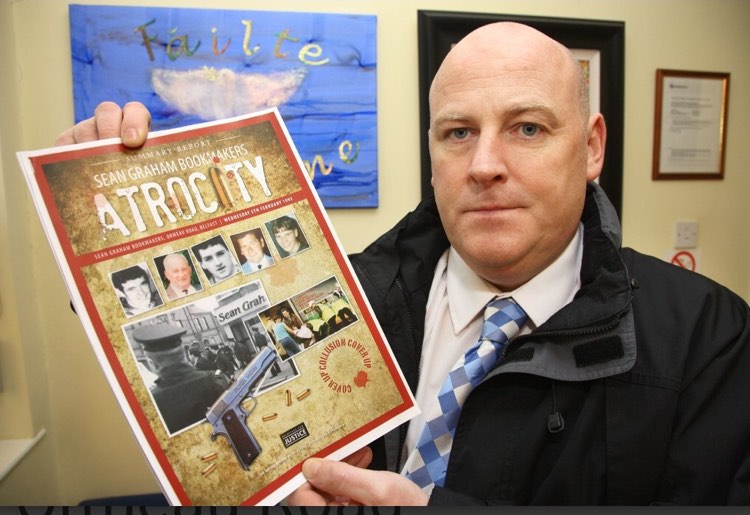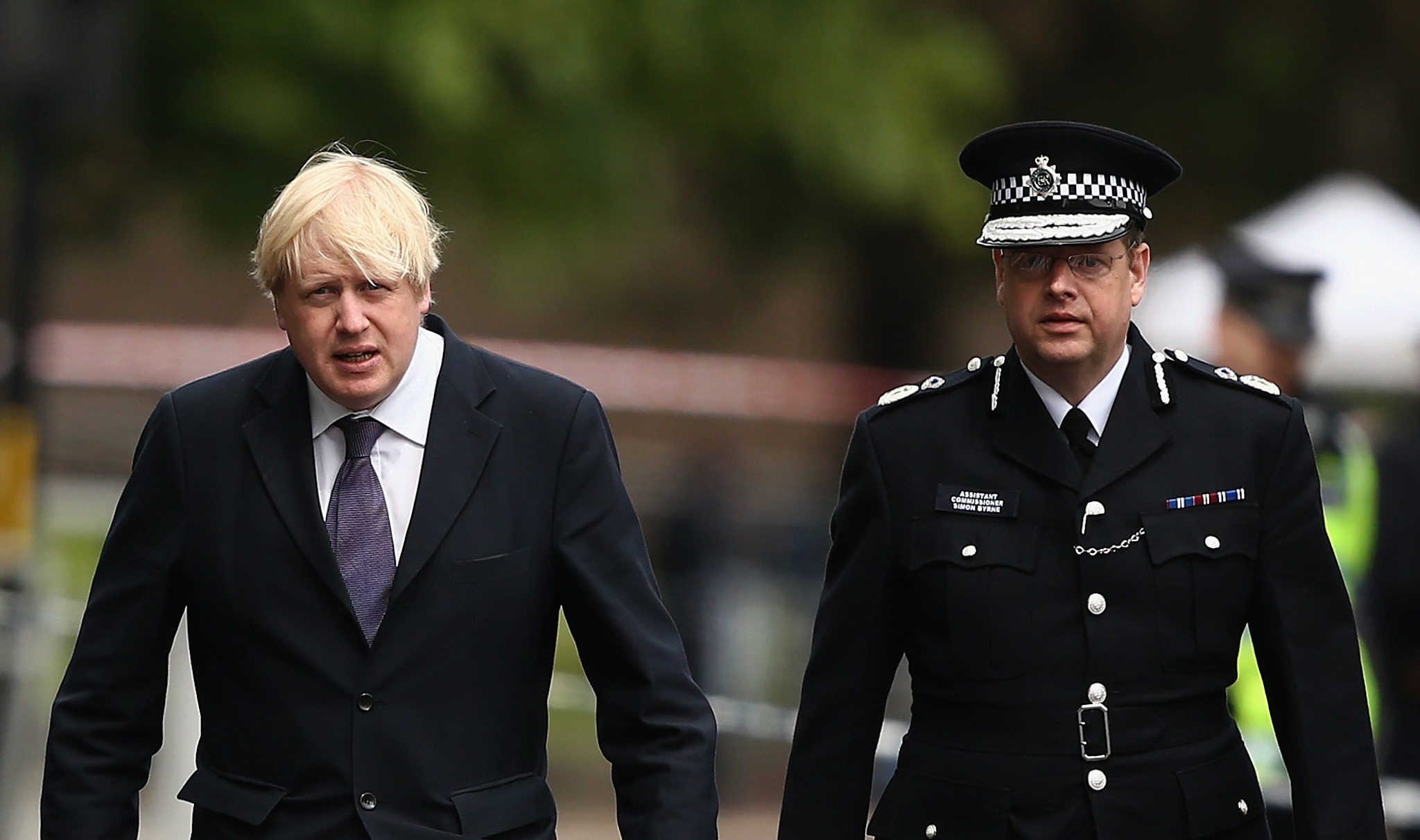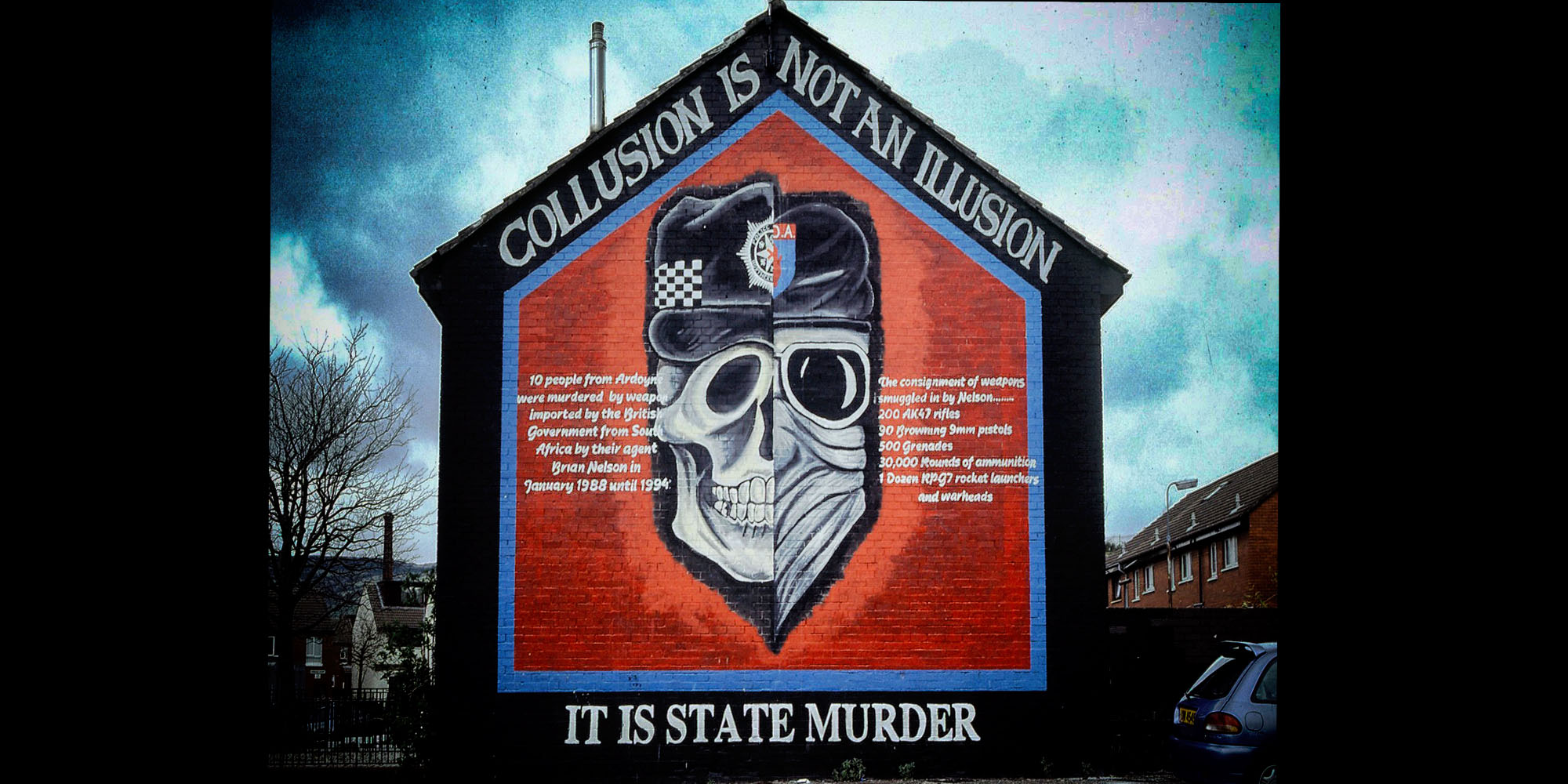South Belfast, February 1992. Two gunmen burst into a bookmaker’s shop on Ormeau Road. One opens fire indiscriminately with an assault rifle. The second uses a Browning pistol, firing at the wounded at close range. By the time they are finished, five people are dead.
Fast forward almost 30 years to today, and the truth about this awful crime is still being suppressed. The independent Police Ombudsman has looked into disturbing claims the gunmen were in cahoots with the police.
Their report is now finally ready to come out, but Northern Ireland’s chief constable is trying to censor it. This smacks of a cover-up, especially given what we already know.
The pistol used in the attack came from a local British army barracks. It was taken from the armoury by Ken Barrett, a police informer and loyalist paramilitary – a violent gangster who wanted Northern Ireland to remain part of the UK.
The pistol then went through a pass-the-parcel series of events. Barrett gave it to another police informant who passed it to the police. Instead of confiscating the weapon, they remarkably returned it to the Ulster Defence Association – a loyalist gang.
The weapon was received by the group’s “quarter-master”, William Stobie, who was also a police agent.
“The pistol used in the attack came from a local British army barracks”
In a June 2007 letter to the bereaved families, the Public Prosecution Service in Northern Ireland explained it had decided, for lack of evidence, not to prosecute senior police officers responsible.
Barrett was given a life sentence for the 1989 murder of Belfast solicitor, Pat Finucane, but has since been released and is believed to be living at an unknown location in southern England.
As one of the killers is also believed to have been a police agent, and who is alleged to have gone on to kill another nine people, the Ombudsman’s report is keenly anticipated.
Although an eye-witness saw one of the killers removing his mask as he ran from the scene, and identified him later, his evidence was dismissed. The police wrongly claimed the witness was an active republican and therefore had no credibility. (Republicans want a united Ireland without any British control.)
Solicitor Niall Murphy of KRW Law, acting for the families, said: “Although all such cases are equally horrific, this is the most proven and egregious case of collusion I have ever seen.”
“There is, firstly, clear evidence of state involvement in the procurement of weapons. State forces facilitated its theft, provided it to the Ulster Defence Association (UDA), refused to charge, arrest or even interview the main suspects – themselves police informers – and are even now hiding the facts through the use of secret courts.”
Redacting the report
Lawyers for the families of the victims, whose murders the Ombudsman is investigating, accept that the Police Service of Northern Ireland (PSNI) has a legal right to see an advance copy of the report – but for fact-checking purposes only.
Anyone criticised in the report also has a pre-publication right of reply – but legal experts say no-one else has a right to redact the report except the Ombudsman.
At a very late stage in the process, however, the force appears to be trying to change the report significantly in advance of publication – a move the families’ lawyers say would be unlawful and will be challenged.
There are concerns amongst the victims’ families that an undisclosed reason for the undue delay in publication (they were told two years ago it was ready for release) is the British government’s determination to pass legislation barring future judicial proceedings, or even to suppress the entire report.
The issuing of a “Public Interest Immunity Certificate”, which may lead to parts of the Ombudsman’s report being censored, comes on top of other “Closed Material Proceedings” (secret court hearings).
Both of these are threatening public confidence in the veracity and completeness of the Ombudsman’s report.

Those who died in the 1992 attack were Peter Magee (18), Jack Duffin (66), Willie McManus (54), Christie Doherty (52) and James Kennedy (15).
Belfast man, Mark Sykes, who was shot six times during the attack, and who was Peter Magee’s brother-in-law, asks: “How can it be in the public interest to withhold information about the murders of up to 12 people – possibly even more – by a police agent?”
“It’s not just confidence in how the murders of our families and friends were investigated”, he said, “but trust in the entire criminal justice system that is at stake”.
At a commemorative event on the anniversary of the massacre last year, Sykes was arrested by police supposedly inquiring into a possible breach of Covid-19 rules. At the time he was holding flowers to lay at a plaque remembering the dead.
“Shielding killers and information”
Relatives for Justice, an NGO advocating on behalf of the victims’ families, is also appalled. Its director, Mark Thompson, says the repeated delays in publishing the Ombudsman’s report are “outrageous and unacceptable” and is demanding answers on why the PSNI is “shielding killers and information about these murders?”
The current Police Ombudsman, Marie Anderson, who has authority over the report, is taking legal advice and has written to the PSNI seeking a “detailed submission” so she can assess whether the Chief Constable is acting in the public interest.
In another unprecedented move, the Ombudsman has felt it necessary to remind the PSNI that the independence of her office – and public confidence in it – can only be maintained if the force produces “the most compelling grounds” for seeking to remove anything from her reports.
Lawyers acting for the five victims’ families were shocked this week to receive the letter informing them of the latest police attempt to block publication of the full report which comes after two earlier failures to provide full disclosure of the facts to the Police Ombudsman.
On one of these two occasions, in February 2019, after a ruling in a civil case that the PSNI had failed to disclose all documents, one of the families’ lawyers, Niall Murphy, discovered that the PSNI had not informed the former Police Ombudsman, Michael Maguire, of their existence.
Had Murphy and Maguire not met through a chance encounter in the street, the then Ombudsman would not have known of the missing documents.
Later that year, in October 2019, the in-coming Ombudsman (Anderson) was forced into a further delay in the publication of the report when she discovered for a second time that the police had failed to locate all the required documents.
As a result, she informed the families, the staff in her own office will in future have “more direct involvement” in the conduct of police searches for sensitive material on the PSNI estate and she personally intends “to become more directly involved in oversight”.
Earlier, in another development that shocked the bereaved families, a TV documentary revealed that one of the murder weapons, an assault rifle, was on display in the Imperial War Museum in London – for which they received a fulsome apology. It was then removed from display.
This was despite the weapon being a potential exhibit in any future trial; being evidence in at least five unresolved murders and despite the PSNI informing the families and the Ombudsman that it had been disposed of – circumstances solicitor Niall Murphy describes as “both macabre and sick”.
Perhaps uniquely, successive PSNI Chief Constables have had to apologise to the victims’ families on no fewer than three occasions: for displaying one of the murder weapons in the Imperial War museum; for failing to disclose information to the Ombudsman; and for arresting Mark Sykes.
There may yet be even more twists and turns ahead in this murky – but above all tragic – episode.



